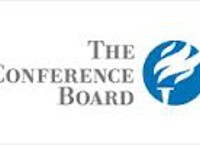Economic indicators continue to rise
The Conference Board Leading Economic Index® (LEI) for the United States continued its growth trend in August, increasing 0.2 percent in August to 103.8 (2004 = 100), following a 1.1 percent increase in July, and a 0.7 percent increase in June.
"The LEI continued to rise in August, although at a slower rate than in July," said Ataman Ozyildirim, Economist at The Conference Board. "The LEI's six-month growth trend has been held back slightly by lackluster contributions from housing permits and new orders for nondefense capital orders. Despite concerns about investment picking up, the economy should continue expanding at a moderate pace for the remainder of the year."
"The leading indicators point to an economy that is continuing to gain traction, but most likely won't repeat its stellar second quarter performance in the second half," said Ken Goldstein, Economist at The Conference Board. "Meanwhile, the CEI, a measure of current economic activity, continued to expand through August, amid improving personal income, employment and retail sales. However, industrial production registered a slight decrease for the first time in seven months."
The Conference Board Coincident Economic Index® (CEI) for the U.S. increased 0.2 percent in August to 109.7 (2004 = 100), following a 0.1 percent increase in July, and a 0.3 percent increase in June.
The Conference Board Lagging Economic Index® (LAG) for the U.S. increased 0.3 percent in August to 125.1 (2004 = 100), following a 0.3 percent increase in July, and a 0.4 percent increase in June.
The composite economic indexes are the key elements in an analytic system designed to signal peaks and troughs in the business cycle. The leading, coincident, and lagging economic indexes are essentially composite averages of several individual leading, coincident, or lagging indicators. They are constructed to summarize and reveal common turning point patterns in economic data in a clearer and more convincing manner than any individual component – primarily because they smooth out some of the volatility of individual components.
The 10 components of The Conference Board Leading Economic Index® for the U.S. include:
Average weekly hours, manufacturing
Average weekly initial claims for unemployment insurance
Manufacturers' new orders, consumer goods and materials
ISM® Index of New Orders
Manufacturers' new orders, nondefense capital goods excluding aircraft orders
Building permits, new private housing units
Stock prices, 500 common stocks
Leading Credit Index™
Interest rate spread, 10-year Treasury bonds less federal funds
Average consumer expectations for business conditions
For more information about The Conference Board global business cycle indicators:
http://www.conference-board.org/data/bci.cfm
|
Summary Table of Composite Economic Indexes |
||||
|
2014 |
6-month |
|||
|
Jun |
Jul |
Aug |
Feb to Aug |
|
|
Leading Index |
102.5r |
103.6r |
103.8p |
|
|
Percent Change |
0.7r |
1.1r |
0.2p |
3.9 |
|
Diffusion |
60.0 |
70.0 |
50.0 |
80.0 |
|
Coincident Index |
109.4 |
109.5r |
109.7p |
|
|
Percent Change |
0.3 |
0.1r |
0.2p |
1.4 |
|
Diffusion |
100.0 |
100.0 |
75.0 |
100.0 |
|
Lagging Index |
124.3r |
124.7r |
125.1p |
|
|
Percent Change |
0.4r |
0.3r |
0.3p |
2.3 |
|
Diffusion |
71.4 |
64.3 |
57.1 |
64.3 |
|
p Preliminary r Revised |
||||

